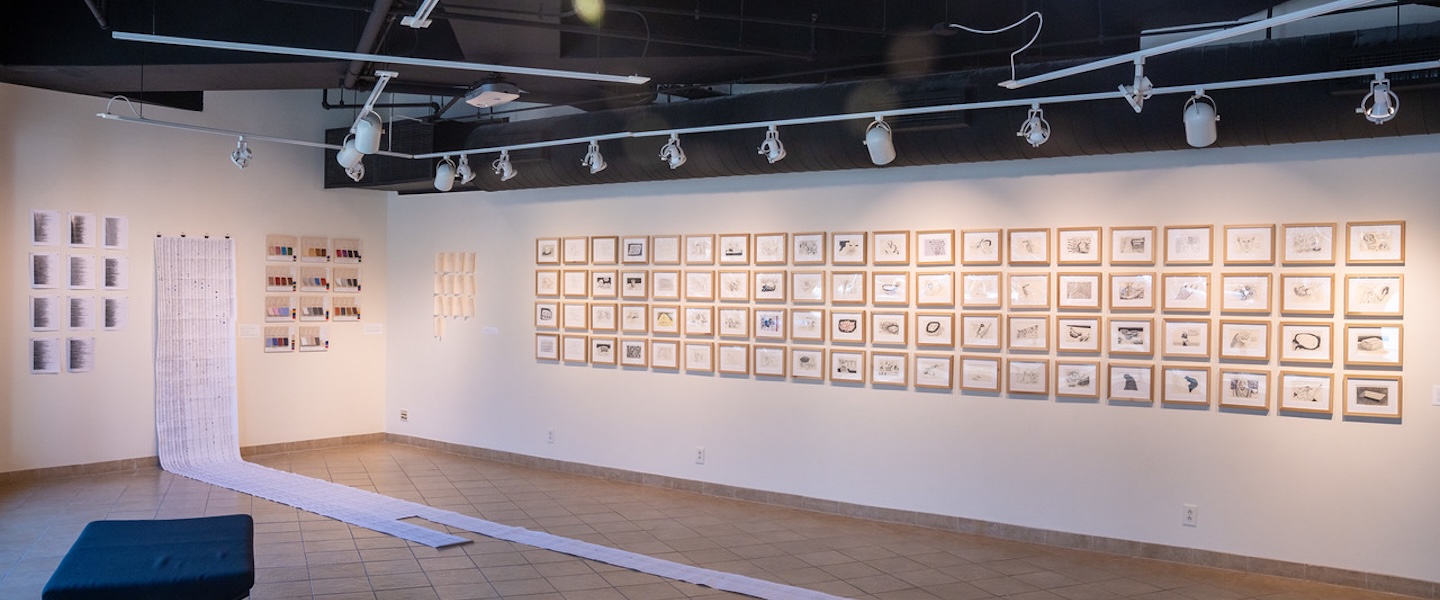New exhibition by Watkins College of Art associate dean explores gratitude, impermanence and artistic practice
In 2008, Benjy Davies was searching for a brown rice recipe online when he stumbled upon a blog post that would transform his artistic practice forever. The post, titled “How to Change Your Life in 30 Days,” suggested a simple but powerful idea: commit fully to a change for just 30 days and see what sticks. For Davies, now associate dean of the Watkins College of Art and associate professor of art, this led to a commitment to create one small drawing every day.
Fifteen years and over 6,000 drawings later, that commitment hasn't wavered.
“I made a little drawing folder and decided to create one drawing, four inches by six inches, on an 8-by-10 piece of paper every day for 30 days,” Davies recalls. “And I'm still doing it.” This daily practice has become more than just an artistic exercise — it's evolved into his most successful body of work, earning numerous grants and awards, and shaping his approach to both art and education.
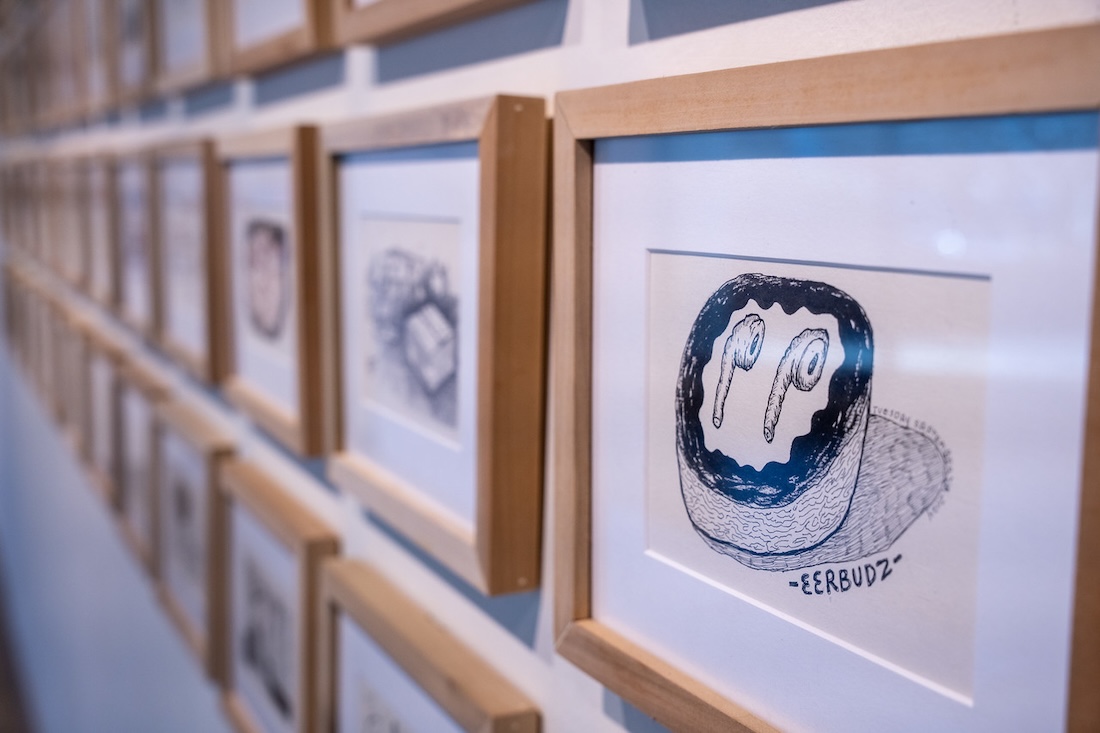
A New Home at Belmont
Davies joined Belmont in July 2024, drawn to the University's commitment to serving art students within a liberal arts environment. “I've become really, really impressed with how well Belmont practices gratitude and humility and excellence," he shared. “The leadership meetings start with gratitude, and that's really important to me.”
Having found an ideal blend of administrative work and teaching that allows him to remain connected to students in the classroom, Davies says he intends to make Belmont his home for the remainder of his career. “This is now my dream job,” he smiled.
“Ways of Seeing:” An Exhibition in Three Parts
His current exhibition, "Ways of Seeing," on display in Gallery 121 through February 21, offers the Belmont community a comprehensive introduction to his artistic vision. The show comprises three distinct elements: traditional painting and printmaking, selections from his daily drawings project and experimental conceptual work.
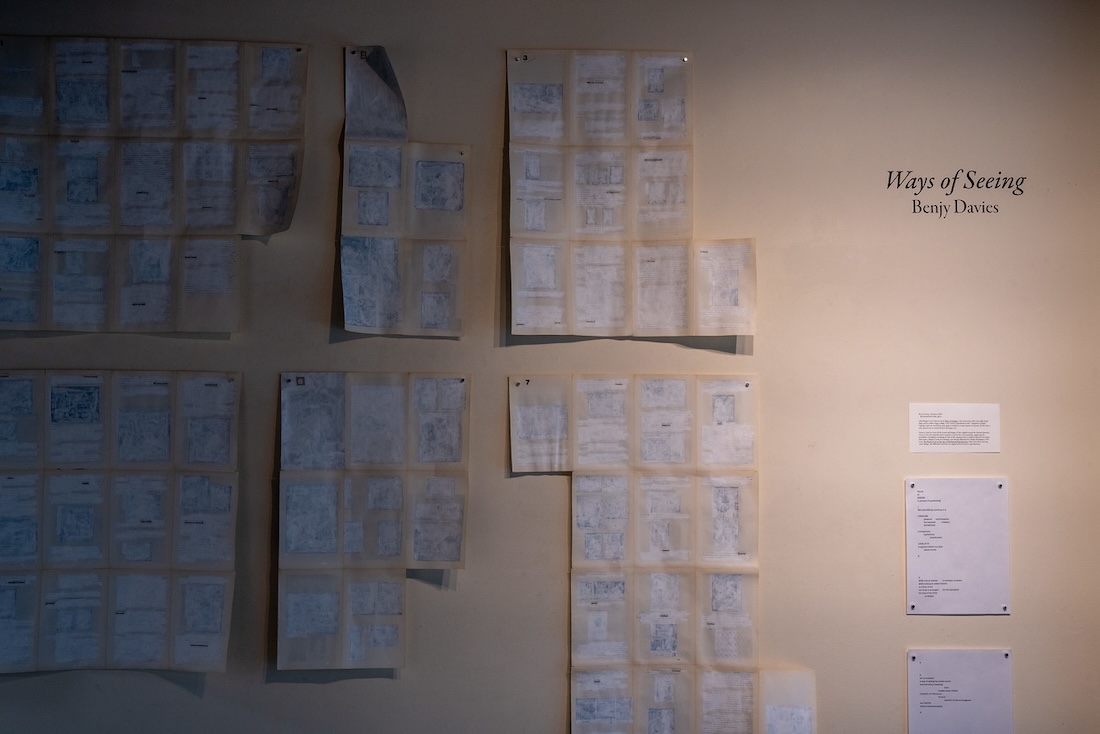
Daily Practice on Display
The daily drawings section features 80 pieces that span from Davies's interview day at Belmont to the exhibition's opening, creating a visual timeline of his journey to becoming part of the University community. Among these is a playful series of 20 bird drawings — including realistic birds, Tweety Bird and Larry Bird — that serves as an inside joke referencing the admissions team's advice to prospective students: “Don't just give us 20 drawings of birds in your application portfolio.” The collection also includes portraits of fellow faculty members and interpretations of their artwork, creating a rich tapestry of his early Belmont experience.
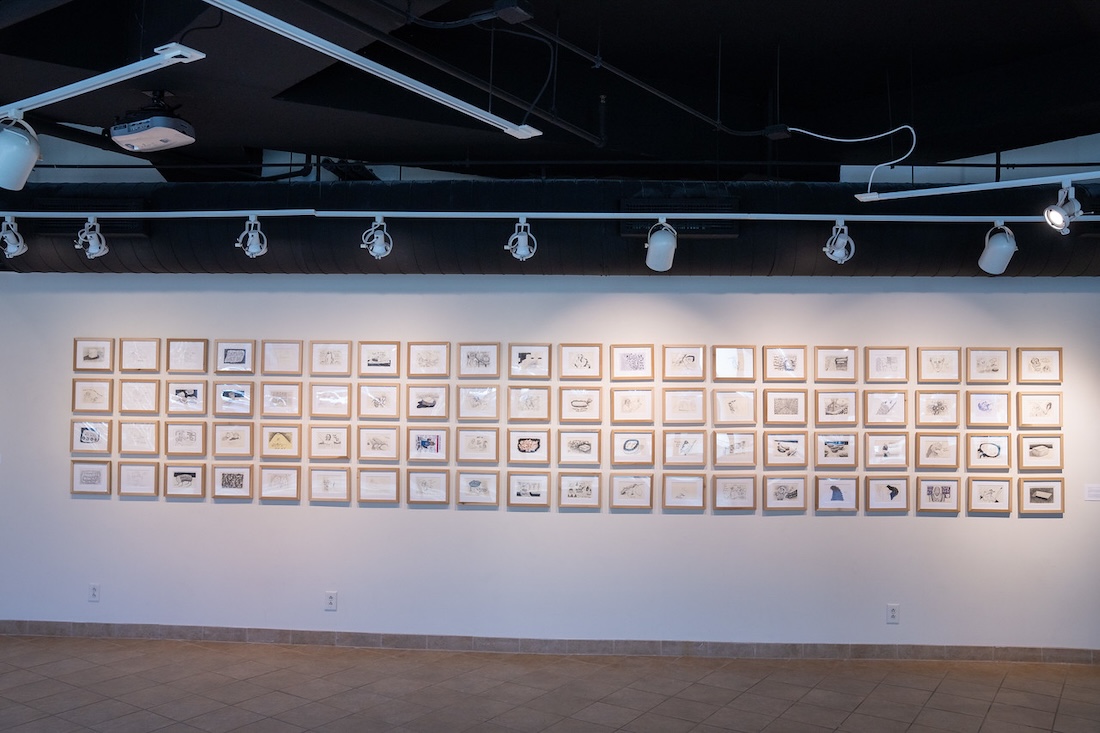
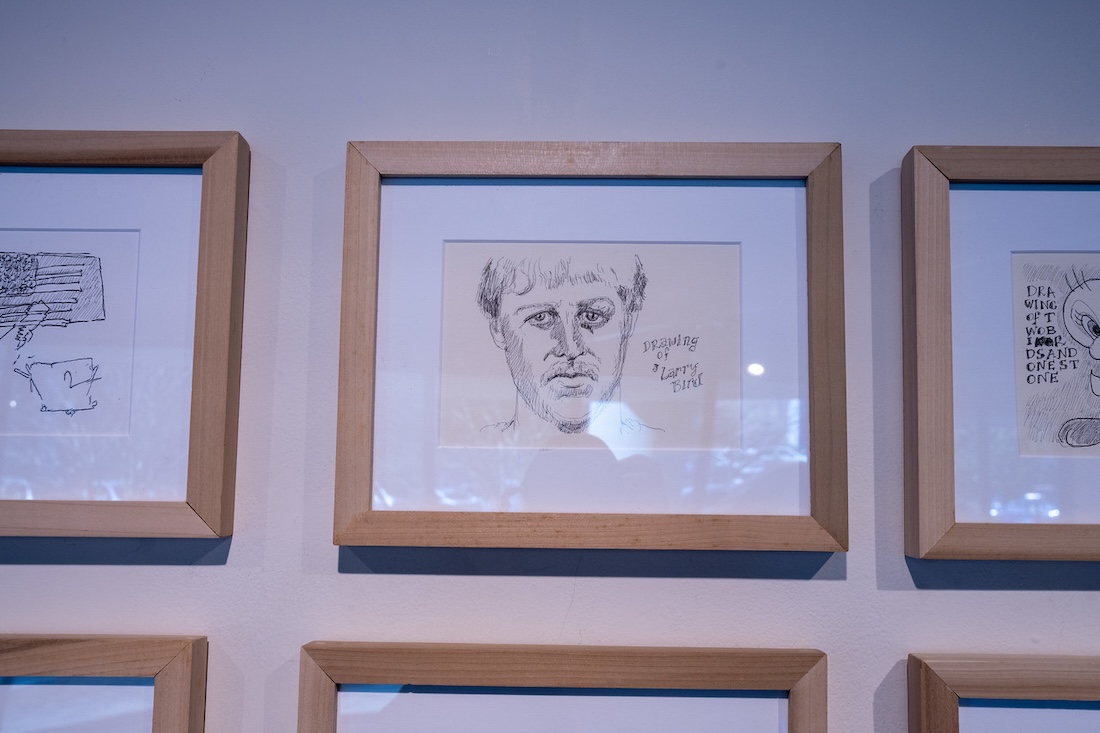
Exploring Ideas through Conceptual Art
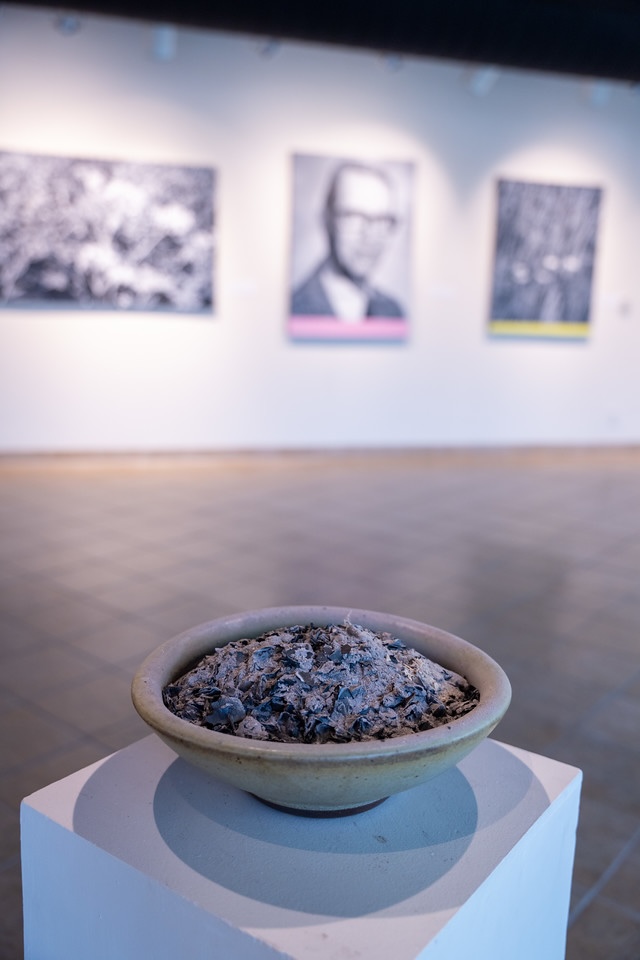
The exhibition's conceptual pieces showcase Davies's engagement with contemporary themes through various approaches. The title piece, “Ways of Seeing,” deconstructs John Berger's influential 1970s book of the same name. Davies separated each page by chapter and extracted one word per page to create a poetic essay that retells the book's story, exploring ideas of covering, revealing and distillation.
Another powerful piece, “Ashes of 1,000 Paper Cranes,” connects personal history with gratitude and impermanence. Inspired by both his father's anti-nuclear activism and the Japanese tradition of folding 1,000 paper cranes for a wish, Davies created a unique ritual that challenges the notion of a transactional faith.
“Rather than making these and putting them in the ‘vending machine’ of God," he explained, “I say, ‘Hey, I've already gotten these things, and I'm saying thank you.’” He wrote a list of 1,000 things he was grateful for — from family and friendships to simple pleasures like spaghetti or non-alcoholic beer — and burned each crane as a gesture of gratitude.
The project wrestles with questions of artistic permanence: What do we do with all this work we create? What happens to 1,000 paper cranes or 6,000 drawings? The ashes, collected in a perfectly sized bowl, stand as a meditation on both impermanence and gratitude for even those things you’ll ultimately lose.
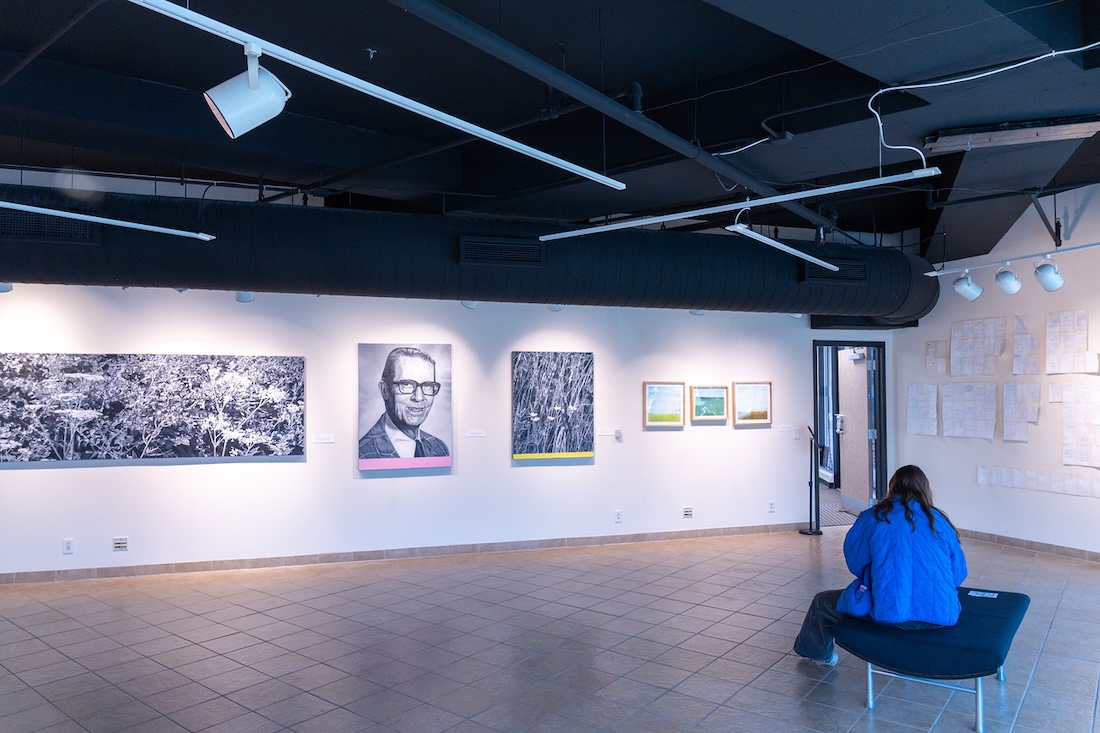
The exhibition also features an intriguing piece involving an erased self-portrait, which Davies' students helped create by erasing his original drawing. Inspired by Rauschenberg's famous erased de Kooning drawing, the work explores the relationship between mentor and student, original and reproduction, value and accessibility. The piece exists in multiple forms — as a digital photo, a physical drawing (now erased), and as a poster visitors can take home. Through QR codes, viewers can see the original drawing and are invited to consider a provocative question: In an age where art can be endlessly reproduced and distributed digitally, what is the value of owning a physical reproduction? Visitors can answer this question literally by scanning a second QR code to donate their chosen amount to the student honors club.
Rounding out the conceptual works is a series analyzing Taylor Swift's lyrics — a project that feels particularly at home at Belmont. Using data analysis and AI, Davies created visual representations of Swift's evolving vocabulary across albums, exploring both the evolution of Swift's artistry and questions about mechanical reproduction and the role of AI in creative processes.
Taylor Swift
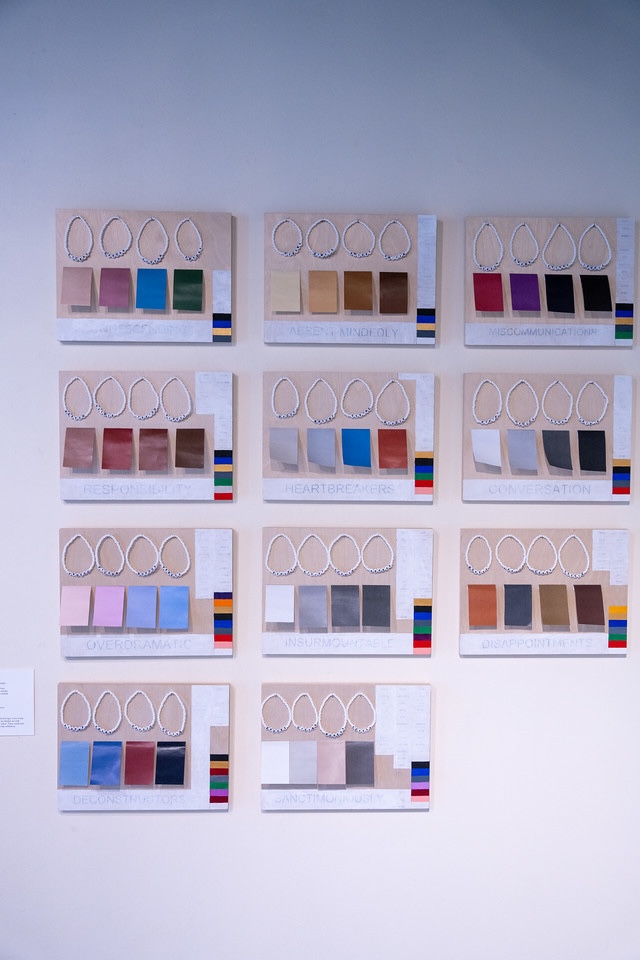
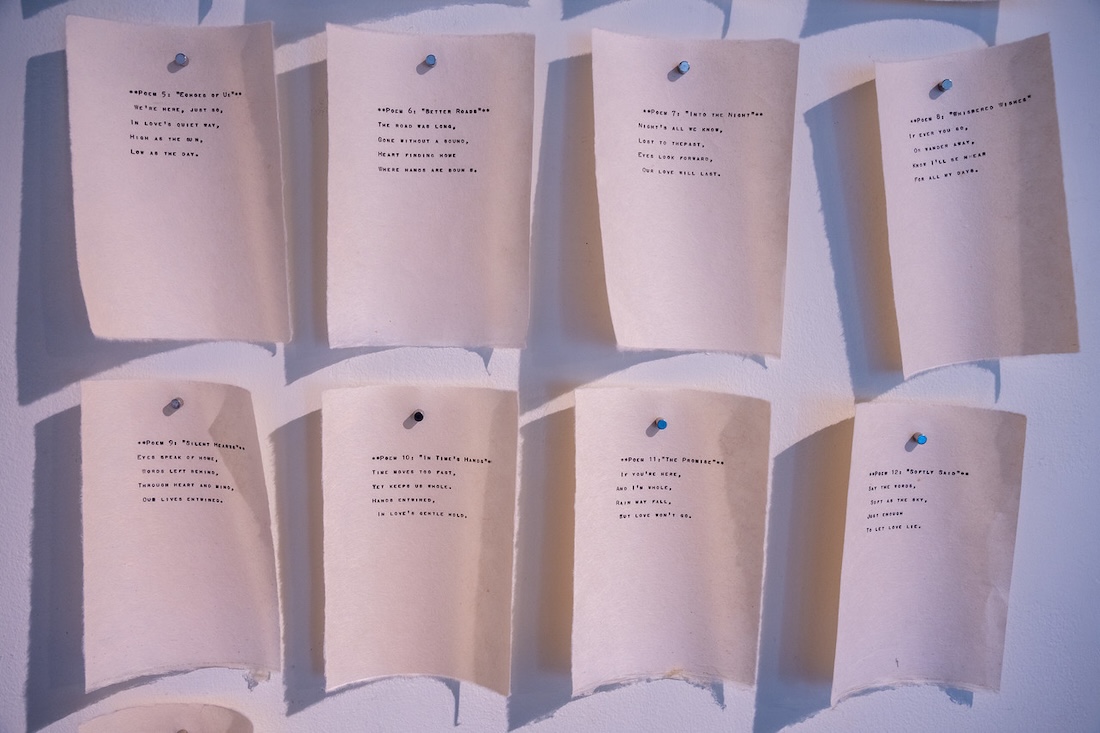
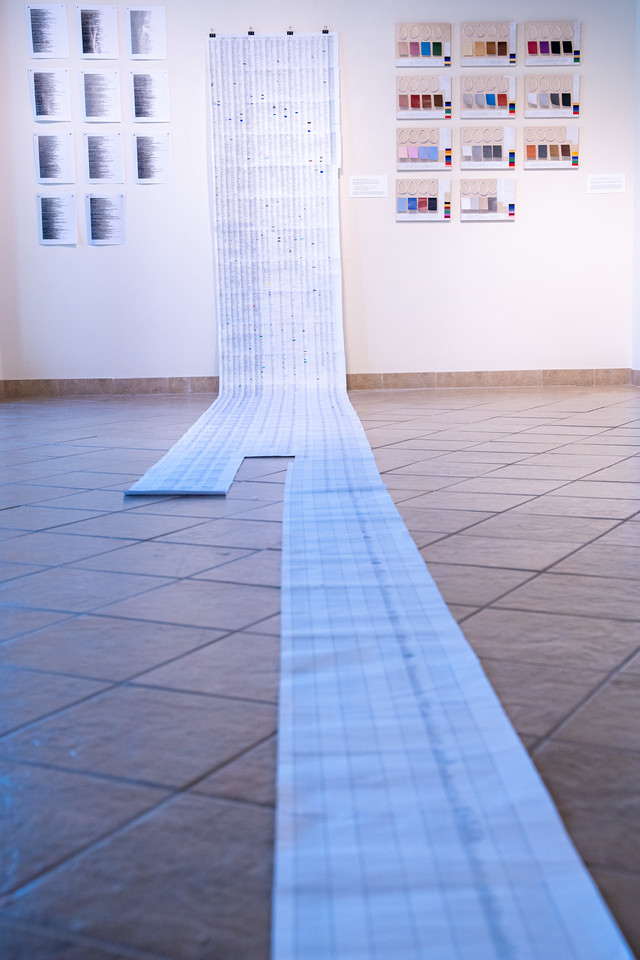
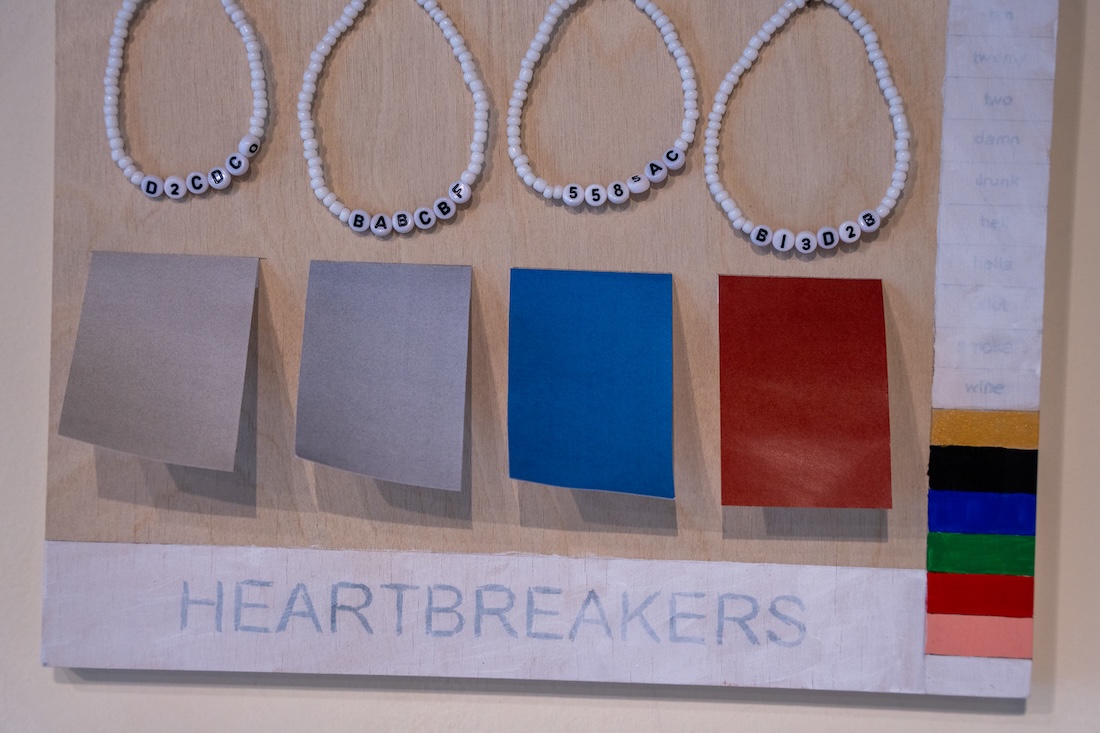
Where Teaching Meets Practice
This attention to structure and pattern carries over into Davies' teaching philosophy, which is influenced by a friend's concept of “living way, working art.” “I had a friend years ago who was an electrician and a Buddhist,” Davies shared, “and his phrase was ‘living way, working art.’ How can we connect how we live and how we work and our art?” This holistic approach shapes how he structures his courses, being honest and transparent about what he does and helping students make their own connections.
At its core, Davies' teaching philosophy grapples with a fundamental challenge in art education: how to evaluate and reward the messy process of creative growth. “There's always this problem of how we reward risk-taking when something fails," he explained. “How do we get students to be experimental if we know that most experiments fail?"
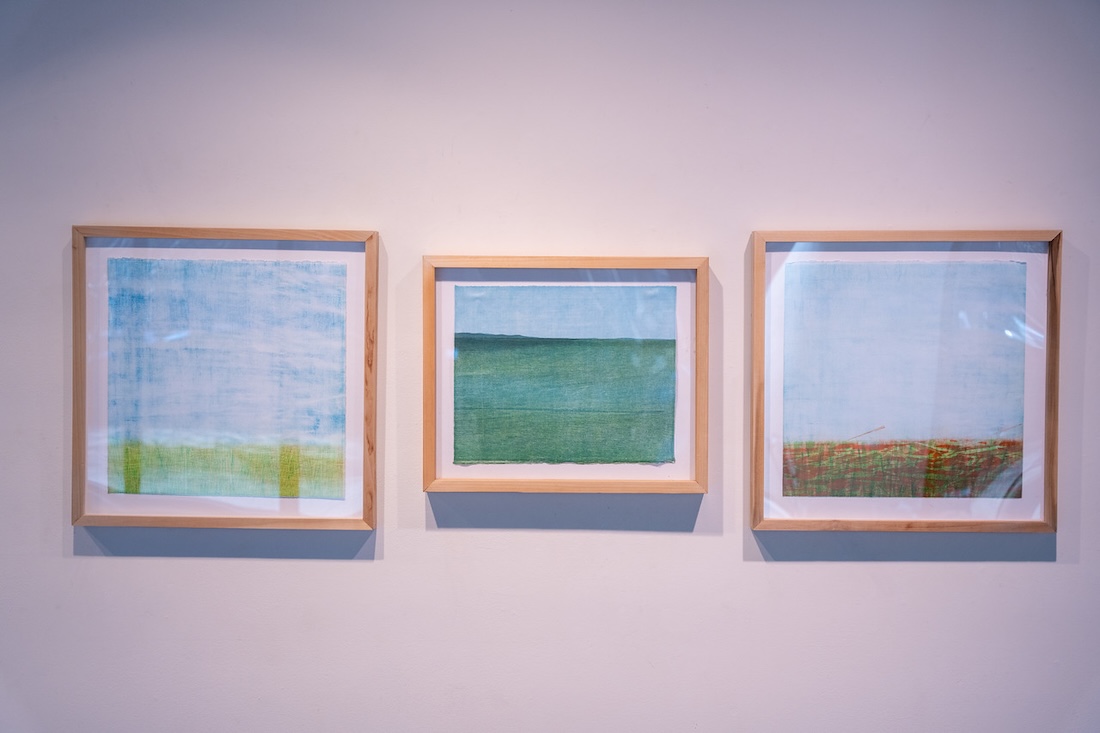 His solution is to focus on the practice itself, removing the fear of failure and incentivizing deliberate practice. “You can get an A in my class if you're a terrible drawer and you work the whole time,” he noted, “because progress is not linear. What's really going to get you to that leveling up is the continual application.”
His solution is to focus on the practice itself, removing the fear of failure and incentivizing deliberate practice. “You can get an A in my class if you're a terrible drawer and you work the whole time,” he noted, “because progress is not linear. What's really going to get you to that leveling up is the continual application.”
By sharing how this process has worked in his own life and artistic practice, he hopes to show students that this is how most artists work — and how they can work, too.
The connection between his daily drawing practice and teaching approach becomes clear when he discusses the value of consistent effort. “I did not make this in a day,” he said, gesturing to his work. “We break it into little pieces, and we just do each piece one day at a time.”
How can we connect how we live and how we work and our art?
Finding Structure in Art and Teaching
Looking at his exhibition as a whole, Davies notes an unintended theme that emerged: everything is built on grids. From the daily drawings' display to the traditional paintings, from the arrangement of paper cranes to the analysis of Swift's lyrics — the underlying structure of grids appears everywhere. For Davies, this reveals something about both his artistic practice and teaching philosophy. “What I found is that structure is a place to ameliorate anxiety,” he reflected. “The structure is something that can lift all those students up, and even the students that already have a strong sense of structure — it reassures them. They always know what's coming. They always know what to expect.”
Like those 6,000-plus daily drawings that began with a simple Google search for brown rice, Davies believes artistic growth comes through dedicated practice and willingness to embrace the process. “I don't know that my drawings are actually better,” he reflected, “but as a group, they're better, and I can sort out the junk. That's the lesson — this daily practice.”
The Belmont community is invited to learn more about Davies's work and artistic philosophy at a gallery talk and reception Thursday, Jan. 23, from 4:30-6 p.m. in Gallery 121 in the Leu Center for Visual Arts, with the talk beginning at 4:45 p.m.
Learn More
Stay Up to Date on All Things Watkins

